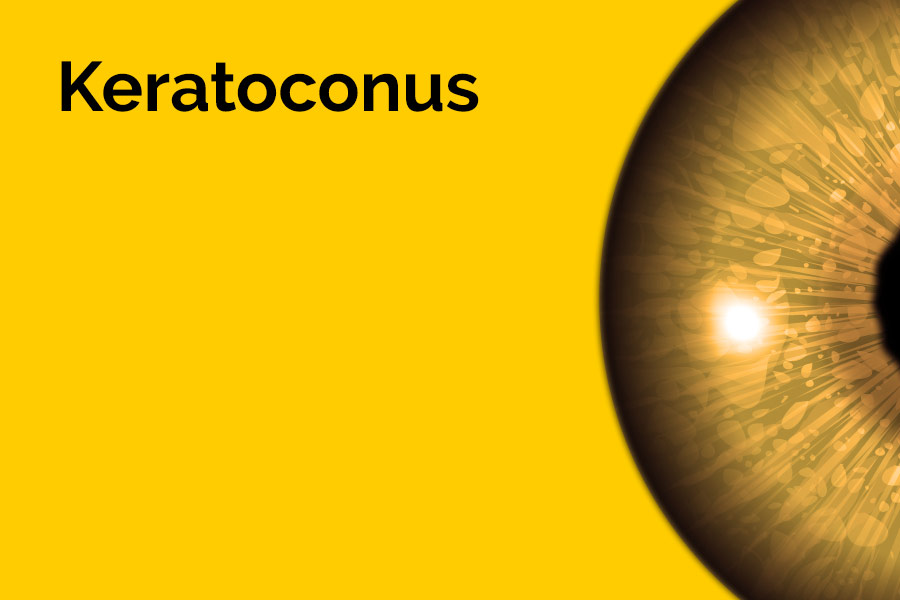Keratoconus
Keratoconus is a thinning disorder of the cornea that causes visual distortion. It is a non-inflammatory condition in which the cornea thins causing a cone-like bulge to develop. This can cause vision to become blurry and distorted, as the light focused by the cornea forms an unclear image on the retina.
The condition is estimated to occur in 1 out of every 2,000 people in the general population. It generally develops in your teens or 20’s and can worsen over time.
Symptoms
Keratoconus usually starts in teenage years with increasing short-sightedness (myopia) and astigmatism. It’s extremely important to be assessed by an ophthalmologist early on as there are new treatments available to stop the condition from getting worse.
The earliest signs of keratoconus are usually blurred vision and frequent changes in eyeglass prescription, or vision that cannot be corrected with glasses. These symptoms usually begin in late teenage years or early twenties, but can start at any time.
Other symptoms can include:
- Eye irritation, excessive eye rubbing
- Headaches and eye pain
- Eye strain
- A halo effect around lights
- Difficulty driving in dark conditions
- Increased sensitivity to light
Diagnosis, Screening and Tests
Keratoconus can be diagnosed through a routine eye exam. Your ophthalmologist (eye doctor) will examine your cornea and may measure its curve. This will show whether there has been a change of shape. Your ophthalmologist may also map your cornea’s surface using a special computer. This detailed image shows the condition of the cornea’s surface.
Treatments
Treatments for keratoconus differ depending on your symptoms. If your symptoms are mild, your vision can be corrected with glasses. Later you may be required to wear special hard contact lenses to ensure your vision stays in proper focus.
There are several other ways in which an ophthalmologist may choose to treat keratoconus including:
- Intacs: Intacs is a small curved device that can be placed in your cornea. Intacs help to flatten the curve of your cornea to improve vision.
- Collagen cross-linking: Your ophthalmologist uses a special UV light and eye drops to strengthen the cornea. This helps to flatten or stiffen your cornea, keeping it from bulging any further.
- Corneal transplant: With severe cases of keratoconus, your ophthalmologist may suggest a corneal transplant. This involves replacing all or part of your diseased cornea with healthy donor corneal tissue.
Prevention
In the majority of cases, keratoconus cannot be prevented, there are however some measures that can be applied to try and prevent the condition.
Rubbing your eyes should be avoided at all costs. Vigorous rubbing may damage the cornea and eventually lead to keratoconus.
Rigid contact lenses are made of hard materials. If you wear this type of contact lens, it is essential to pay attention when using them. They should fit properly and there if there is any ill-fitting of any kind, you should consult your ophthalmologist immediately.
